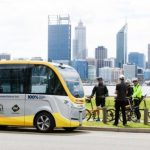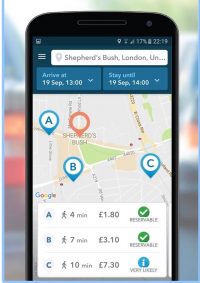Interoperability: The key to the emerging smart city
Interoperability: The key to the emerging smart city3

Smart city technologies continue to experience rapid growth, both in the development of new devices and their applications within the city environment. Globally, cities’ investment in Internet of Things (IoT) technologies will increase by $ 97 billion from 2015 – 2019. In order for these investments to realize a return, innovators, manufacturers, and policymakers need to work together to first solve one of the most complex challenges that faces smart city development — interoperability.
In order for these investments to realize a return, innovators, manufacturers, and policymakers need to work together to first solve one of the most complex challenges that faces smart city development: interoperability.
See also: Kansas City likes sharing its smart city data so other cities benefit too
As the world continues to become increasingly interconnected, technology no longer revolves solely around the pure innovation and efficacy of a single product operating alone in a silo. Technology often must now operate within a connected ecosystem to more fully realize its value.
Performance within a connected ecosystem, with many and diverse players, comes with interoperability expectations and therefore challenges that must be addressed before mass deployment occurs — especially when applied to urban environments.
More specifically, while cities may look to implement one technology at a time, the goal of a smart city is to have an over-arching ecosystem of different technologies that collectively improve the efficiency, security, safety and sustainability of a city. Today’s smart city is still highly segmented. There are IoT products for energy storage, transportation, utilities, sustainability and indoor air quality – to name just a few.
Looking at Pittsburgh
Cities like Pittsburgh, a place that has become a poster child for smart city pilot projects in the United States, are deploying independent projects – centralizing remaining a future goal. The city has a partnership with the United States Postal Service and Carnegie Mellon University to improve road safety by detecting surface cracks and potholes through cameras mounted on trucks. The city also has improved bridge safety by assessing vibration levels through sensors mounted on vehicles. To enable continuous navigation services, Pittsburgh has installed beacons in city tunnels with the navigation app, Waze.

Tom Blewitt, Director of Principal Engineers, UL
While these types of initiatives are making positive impacts on their own, as Pittsburgh’s system continues to expand into other smart technologies, bundling and integrating these systems together will be necessary to take sizeable leaps in the efficiency of city operations. Enabling interoperability within and between systems is essential.
Interoperability standards can encourage wider adoption of connected technologies. From a product manufacturer’s point of view, it is critical that expectations be fully understood for the compatibility of devices for city-wide adoption by asking questions such as how shall the devices operate under the specified real-world use cases, how shall they connect to a municipal network, and what provision is made available for updates once the technology is already deployed.
Clearly, bringing an innovative technology to market is not enough. The innovative technology must work with the specific municipal infrastructure and should utilize a communication and security protocol that is trusted for citywide use. Furthermore, manufacturers need to plan for a competitive landscape in which multiple manufacturers have a hand in creating a city system — rather than the “walled garden” of one type of technology or one solution.
From the municipality’s point of view, it is critical to see what the technology does and how it will operate in the field, whether it will be reliable and resilient, before making an investment. Take lighting as an example. On average, most cities exploring smart lighting will plan for 75,000 new or retrofitted light structures, which makes smart city lighting a hefty investment. Just as consumers may not invest in a car before a test drive, municipalities should not move forward with mass deployment simply on performance claims.
Municipalities first need to understand how connected lights will operate under local conditions and how reliable and resilient they are. In order to do this, many are opting for trial deployments — installing lights in a representative small-scale area to test the technology before making a larger investment. A recent example is
A recent example is a successful twelve-month trial that Australia completed across Brisbane, Ipswich and Townsville — deploying 200 LED street lights with sensors. Addressing interoperability of the hardware and communication / security protocols sooner rather than later will help speed up additional deployments after the trial phase. Having a proactive strategic plan for municipal interoperability increases the probability of success.
Moreover, having interoperability standards in place also can contribute to gaining citizens’ trust in smart city technologies. Consider electric vehicles. Columbus, winner of the U.S. Department of Transportation’s Smart Cities Challenge, has plans to deploy electric self-driving shuttles.
There are standards that exist to ensure that the electric vehicle battery management system performs, but what about when it comes to integrating with the road condition sensors that these shuttles might interact with? Or the potential demand of a soon-to-be-developed transit hub that they are planned to run out of? For smart technologies, it’s a bit more difficult to integrate performance when they are still in development. Thinking not only about the immediate
See also: Can Seattle’s silo-busting keep it from becoming a “dumb” smart city?
There are standards that exist to ensure that the electric vehicle battery management system performs, but what about when it comes to integrating with the road condition sensors that these shuttles might interact with? Or the potential demand of a soon-to-be-developed transit hub that they are planned to run out of? For smart technologies, it’s a bit more difficult to integrate performance when they are still in development. Thinking not only about the immediate
Think about future interactions of technology
Thinking not only about the immediate application, but also how the technology could or should interact with another piece of smart technology, is critical to successful interoperability of smart municipal system. Attention must be paid to the contemplated “big picture” that all of these technologies will eventually “plug into.”
The foregoing challenges are not trivial but, when solved, will have great upside potential. Unfortunately, interoperability of technologies can, however, open up vulnerabilities for the smart city. A road sensor producing bad or false data to an electric vehicle potentially turns a smart city innovation into a potential safety hazard. If there is an unsecure operating system on even the most innocuous smart city wireless device, it can become an inadvertent unsecure gateway into a more secure system.
According to a recent survey from Tripwire, 98 percent of government IT professionals believe smart cities do not have any protection from cyberattacks today, and 12 percent believe transportation systems are the most vulnerable. There is no question that cybersecurity must be addressed for smart city technology to thrive, but one of today’s challenges is determining what level of protection is required. There is still much work to be done to establish widely accepted expectations of what a secure interconnected device shall be.
Without interoperable components that leverage standardization so each work seamlessly with one another, a smart city cannot flourish and achieve its true potential. Today, individual systems are deployed — smart lighting, road sensors, smart meters, etc. — each working largely to fulfill a particular objective, but integrating these technologies in a municipal macro-system and doing so safe way is what will successfully lead to a brighter future for urban life around the world.
The post Interoperability: The key to the emerging smart city appeared first on ReadWrite.
(76)














